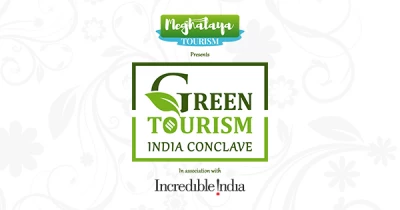
Remote and stunningly beautiful, Arunachal Pradesh is rightly known as “the land of the dawn-lit mountains”, for it is here that the first rays of the rising sun hit India, setting the icy, snow-clad, mist-enshrouded Himalayan peaks on fire. Arunachal Pradesh, that precious jewel of the Eastern Himalayas in India, lived in stately isolation since 1873 when the British put a cap on free access to the region which was part of Assam in colonial times. Hemmed in by Bhutan to the west, Myanmar to the east, the Tibet Autonomous Region of China to the north and north-east and the plains of Assam to the south, it has capitalised on its remote location and forced isolation to preserve its centuries-old culture and natural heritage. Stepping away from that isolation and joining mainstream India now continues apace.
Area-wise, Arunachal is the largest of the northeastern states, with its languid sprawl of 83,743 sq km. Post 1947 it was attached to the North East Frontier Agency (NEFA); but as an outcome of the 1962 conflict with China, the Indian government split up NEFA and gave the status of statehood to the neighbouring territories of Assam. It was made the Indian Union Territory of Arunachal Pradesh in 1972, and in 1987 became an Indian state.
An interesting link of Arunachal to the great Hindu epics is the remnants around Roing, of what is purportedly the palace of Rukmini, Lord Krishna’ wife.
Drained by the Brahmaputra or Siang and its tributaries—the Dibang/Sikang, Lohit, Subansiri, Kameng, and Tirap—Arunachal has a forest cover of over 62% of its total area; this ranges from the sub-tropical to the alpine in the uplands of the northwest, which borders the Himalayan ranges. Given this fantastic botanical wealth, Arunachal Pradesh richly deserves to be ranked among the world’s 17 most important bio-diversity heritage sites. With agriculture as the mainstay of the economy, its croplands predominantly feature maize, millet, buckwheat, pulses, potatoes, wheat and mustard.
Itanagar, the state capital, is the biggest town in Arunachal Pradesh; in fact, there are few townships scattered across its largely rural landscape. Home to 29 tribes, including communities such as the Adi, Mishmi, Miju, Monpa, Sherdukpen, Nishi, Aka, Monpa, Apatani, Idu Khampti, and Singpho, Arunachal offers visitors a rare cultural journey richly illuminated by its music and dance traditions, food heritage, ancestral crafts and spiritual pursuits against the backdrop of a stunning canvas of natural splendour. Festivals like Losar, Mopin and Solung offer deep insights into various aspects of Arunachal’s culture and customs.
Its dispersed scattering of villages and isolated homesteads support this vision of an uncrowded, tranquil landscape illustrated by its varied topography; it offers a perfect escape from the frenetic life in the noisome, polluted environs of bustling urban spaces.
Unmissable experiences await travellers at Dong Village in Anjaw District which gets bathed in the first rays of the rising sun at 4 am; Tawang with its superb New Year celebrations (Losar) at the monastery; Ziro, home of the Apatanis, now famed also for its annual international music festival; Namdapha National Park for unique wildlife encounters and botanical wonders; Bhalukpong, Tipi, and Bomdila for their orchids and floral bounty—and Pasighat for thrilling whitewater rafting on the Brahmaputra.
Travelling around Arunachal brings out the adventurer in you with plenty of memorable rewards along the way. Adventure buffs will love the thrilling trekking and rafting opportunities, while nature lovers and botanical buffs will simply abandon themselves to the wonders of its unparalleled natural beauty and wildlife experiences.
For first timers engaging the services of a good operator is an excellent way to discover Arunachal’s multiple delights. The government-recognised tour operators not only consult with you on itineraries and destinations but also help in obtaining the Inner Line Permits, which can be easily obtained from the Resident Commissioners/Deputy Resident Commissioners at Delhi, Kolkata, Shillong, Guwahati or the deputy commissioners of districts. The best time to go exploring is April-May and again from October-November.

